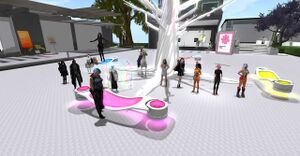Course:FNIS454/Rethinking Social Media
| FNIS 454 Indigenous New Media | |
|---|---|

| |
| About this Resource | |
| This open access resource is developed by the students of FNIS 454: Indigenous New Media. Via summary and analysis of key article, this wiki explores the theoretical, cultural, socio-political, and gendered dynamics underwriting the histories and futures of Indigenous new media as it develops out of the late 90s and into the present moment. | |
| Index | |
| |
Rethinking Social Media, by Ashishvangh Contractor
“Technology in and of itself does not cause societal change (Starr 2005) but how people adopt and integrate technology has enormous implications for the ways in which we engage with one another. This can be readily observed in the domain of political interaction.”
Jamie E. Settle “in Frenemies: How Social Media Polarizes America.[1]
Dorothy Kim’s piece “The Rules of Twitter”, encourages discussions about the ethics and legalities necessary to engage in efficient discourse within digital ‘public’ spaces. In class conversation, we discussed the use of social media networks as public spaces that “can fuel inclusive pedagogy”, but that hold certain cues about how we are supposed to behave, interact and relate with each other within these spaces, as well as the types of cues that are implicit within various types of social media.[2]
In terms of ‘rethinking’ social media, Kim suggests that social media sites are the latest articulation of ‘mediated public spaces’ i.e., environments where people can gather publicly through mediating technology. However, these digital spaces, which were created for the purpose of commerce and the dissemination of information, have now set stage and transformed into inclusive spaces for political and social protest, allowing minority voices and points of view to be vocalized and amplified. Kim draws comparisons between these digital spaces and vibrant urban areas i.e., multiracial, and multiclass communities with flattened hierarchies. Whereas the former, mobilized for knowledge dissemination, resonates with whiteness and privilege.
This shift towards the hacked mediated public space is particularly seen in public networks like Twitter. Kim describes social media platforms as being a ‘mediated’ and ‘hacked’ public space because although these platforms are created for the purpose of public opinion, engagement and discourse, the content posted by the public is mediated by corporations that own them. It is essential to understand these mediators and their intentions and openness to offering an inclusive platform to underrepresented voices without allowing enterprise technology to decide what is and is not free speech.
- ↑ Settle, Jamie E. (2018). Frenemies: How Social Media Polarizes America. Cambridge University Press. pp. 1–19.
- ↑ Kim, Dorothy (2014). "The Rules of Twitter". Hybrid Pedagogy.
